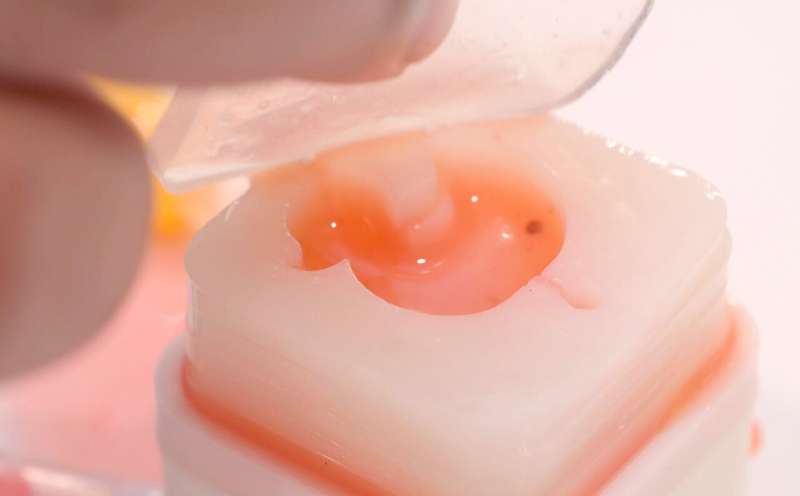Using desserts to decode computer science
[ad_1]

The earlier decade has noticed good strides in revolutionary meals experiences like 3D-printed foodstuff, ingestible sensors, combining robots with foods assistance and ingesting with augmented actuality. So much, these ordeals have only involved applying engineering along with existing food.
Logic Bonbon delivers a “cyber” food items expertise that combines the application of logic operations—the primary building blocks of each individual electronic computer—with edible components resulting in the creation of a liquid-centered dessert.
A Logic Bonbon process features a pre-created hollow bonbon together with the choice of three distinctive “logic gates” that allow for the move of flavored liquids into the bonbon.
People can introduce diverse liquids into the bonbon at the same time and the bonbon is filled with diverse flavor and color mixtures relying on which “logic gate” was applied. The bonbon also has a clear major layer which makes it possible for the users to see their last final results.
Meals designer turned human-laptop conversation researcher, lead writer Jialin Deng, from the College of Facts Technology’s Exertion Video games Lab, explained the concept guiding the growth of the Logic Bonbon was to use food items alone as an integral element of the computational procedure.
“More than the class of a few months, we analyzed the procedure with 10 participants, letting them to perception, experiment and ‘play’ with the Logic Bonbons, filling it with distinct flavor mixtures which they could consume,” Ms. Deng claimed.
“By way of their interactions with the Logic Bonbons, the members tangibly encounter and master about logic functions and are fundamentally creating a mini edible computer that needs an input, performs computation and effects in various combos of outputs while displaying different emoticons and flavors, enabling to the user to encounter what computation ‘tastes’ like.”
Co-author of the investigation, Exertions Video games Lab Director Professor Florian “Floyd’ Mueller, explained the approach of interacting with and knowledge computation require not be limited to linear solutions.
“As a result of this challenge we are illustrating that even meals resources and interacting with your food can be a medium to introduce people today to principles of computer science,” Professor Mueller explained.
“It would be good to see this exploration used and designed even more by creators like chefs, food items designers and gastronomists, to introduce computational ideas in a fun multisensory way and produce experiences exactly where diners ‘execute’ the ‘software’ that the chef has programmed into their food stuff.”
Probable long term study creating on this task contain creating extra complex computational units created of foods to additional take a look at how hospitality can be supported in offering special ordeals to diners even though supporting the chef’s craft and experience.
Researchers create extremely-higher-pace, superior-performance OELGs by making use of organic-inorganic perovskite photodiodes
Jialin Deng et al, Logic Bonbon: Checking out Foodstuff as Computational Artifact, CHI Convention on Human Factors in Computing Systems (2022). DOI: 10.1145/3491102.3501926
Quotation:
Using desserts to decode laptop science (2022, May well 3)
retrieved 3 May 2022
from https://techxplore.com/news/2022-05-desserts-decode-science.html
This document is subject to copyright. Apart from any good dealing for the purpose of private analyze or research, no
section may perhaps be reproduced without having the written authorization. The content material is presented for details applications only.
[ad_2]
Resource hyperlink







